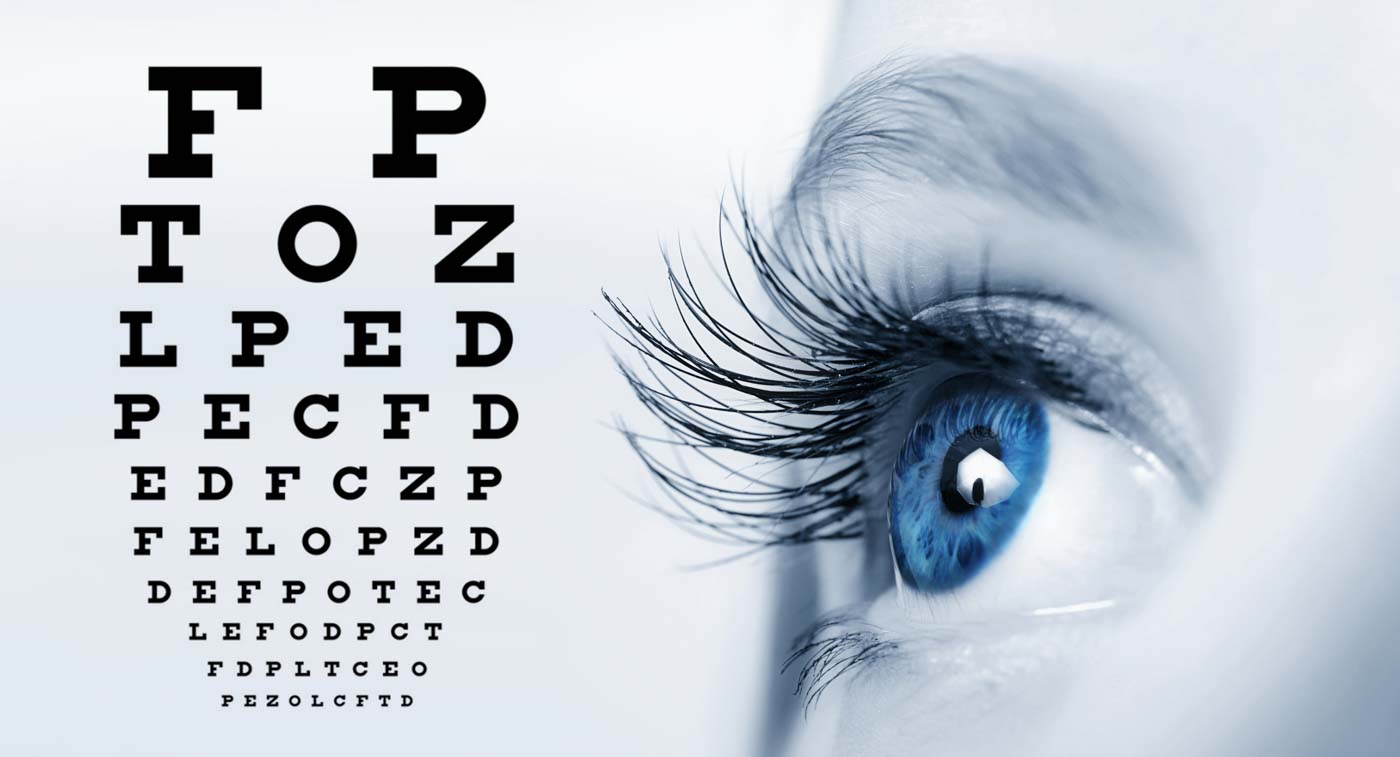Eye Exam: Standard or Comprehensive. Which is Right For You?
Your Eye Exam is Incredibly Important for Your Health! Watch our 1-minute video.
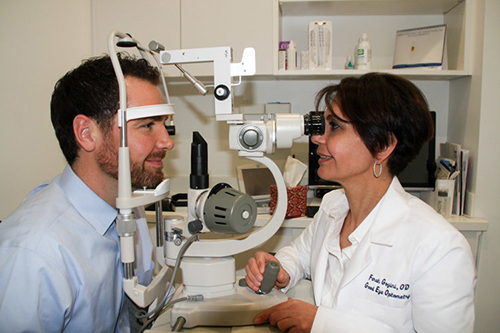
Eye Exam – Introduction
A great eye exam starts with understanding the patient. Here, at Good Eye Optometry, we consider everything from the health of the patients’ eyes to the impacts of lifestyle and health in order to better accommodate our patients.
We have been so successful since our opening in 2005 (almost 20 years ago) simply because we always put our patients’ needs first. This includes our doctors as well as all our team members. In addition to caring our patients, all our optometrists are well trained in the latest eye care treatments with the lastest state-of-the-art equipment. We invite you to make an appointment to come on in and see for yourself!
In the photograph on the left, Dr. Farah Gozini, owner and operator of Good Eye Optometry, administers a comprehensive eye exam on one of her patients.
Your eyes are amazing organs which allow you to interact with your environment. They are arguably the most important sensory organ you have. If you haven’t seen the short video at the bottom of our home page, entitled, “Wonders of the Eye”, please look at it as it is delightful.
What astonishes our optometrists at Good Eye Optometry is that people are so nonchalant about taking care of their eyes. Can you imagine what it would be like to be blind? And how much more difficult your life would be? I’m sure you’ve all worn a blindfold at one time or another. Remember how difficult it was to sense what was happening in the environment around you. Now imagine that feeling 24/7.
Eye exams scheduled on a regular basis are an important part of maintaining not only good eye health, but overall health as well. They can detect vision problems, eye diseases, and other health conditions before symptoms appear. Early detection and treatment of patients’ eye issues can prevent eye strain, vision loss and improve your quality of life.
Eye exams can also help to identify underlying health problems, such as diabetes and high blood pressure. We recommend adults having an annual eye exam, or more frequently if you have a family history of eye disease or other risk factors. Don’t wait until you have a problem – schedule an appointment today for your eye exam to protect your vision and overall health. We accept many types of vision insurance. Contact us to see if your vision insurance is included.
Whether you are a child or adult, you need regular eye care. Data from the CDC indicates that age related eye diseases in the US are the leading cause of low vision and blindness, which include cataracts, macular degeneration, glaucoma and diabetic retinopathy. About 25% of school aged children experience refractive problems which require corrective lenses. If these problems in children are not corrected early, academic performance and self-esteem will suffer.
What are the different types of eye exams?
A standard eye exam primarily measures visual acuity, basically how clearly you can see relative to other people. In addition, it typically includes eye muscle function and coordination, and peripheral vision tests. This information will be used by your optometrist for eyeglasses or contact lenses prescription if necessary.
A comprehensive eye exam is a more thorough evaluation of your vision and the health of your eyes. In addition to the tests included in a standard eye exam, a comprehensive eye exam may also include additional tests to assess the overall health of your eyes and check for eye diseases such as glaucoma and macular degeneration.
These may include tests to evaluate the front and back of your eyes, assessing your eye movement and coordination, and checking for any abnormalities in your retina or optic nerve. Comprehensive eye exams are usually recommended for people with a family history of eye disease, individuals with certain medical conditions such as diabetes and hypertension, and those over the age of 60.
The image on the right shows a young female patient who just completed her comprehensive eye exam consultation and is thrilled with her results.

Regular (Standard) Eye Exam
As stated above, a standard eye exam is performed by your eye doctor, an optometrist or ophthalmologist, which measures primarily visual acuity or your eyesight. It can be broken down into three basic parts:
- Visual acuity test: Quite simply, this test measures your vision clarity. You are asked to read letters from either a physical eye chart mounted to the wall at a given distance or an electronic eye chart. Once your gross eyesight is determined, we’ll get your specific prescription for using a phoropter machine like the one shown in the photograph on the bottom left.
- Eye muscle test: To test the coordination and strength of your eye muscles, your optometrist will ask you to follow a moving object with only your eyes
- Visual field test: This test checks your peripheral vision for blind spots or other abnormalities.
The visual acuity portion of your eye exam will determine refractive errors in your vision which will be used to determine your glasses and or contact lens prescription. For example, if you have nearsightedness (myopia) , farsightedness (hyperopia), or astigmatism, which are refractive errors that cause blurred vision due to an irregularly shaped cornea or lens.
Another common refractive error is age related farsightedness (presbyopia), which usually starts to occur in your mid-fortys. Once the problem is determined, the proper vision correction strategy will be applied to determine the proper prescription for your glasses, sunglasses, or contacts.
The image on the top right shows an eye doctor using a phoroptor machine to determine the proper prescription for eyeglasses and contact lenses. The image on the bottom right shows a grateful patient after receiveing her new glasses as she can see much better.
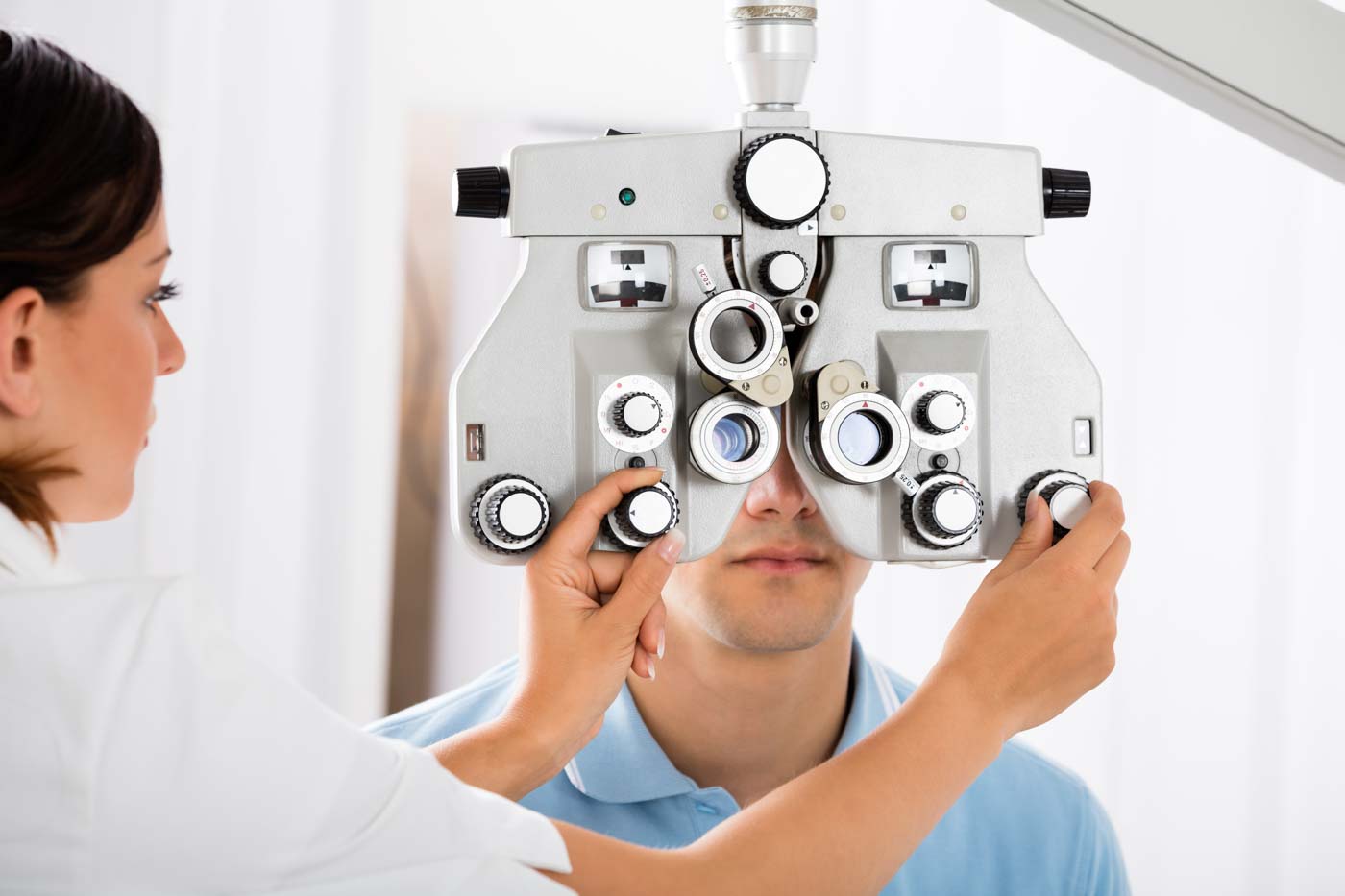
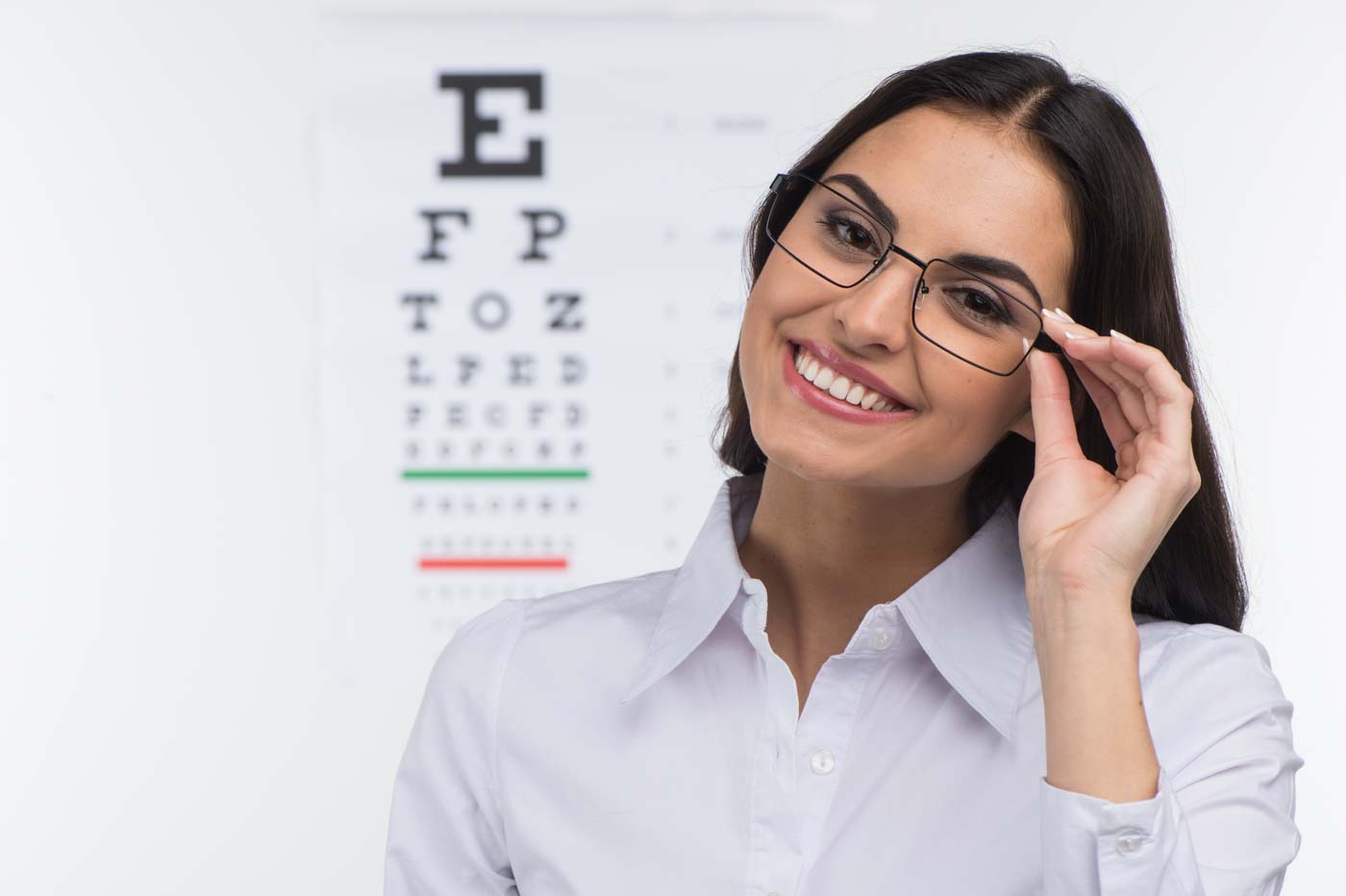
Comprehensive Eye Exam

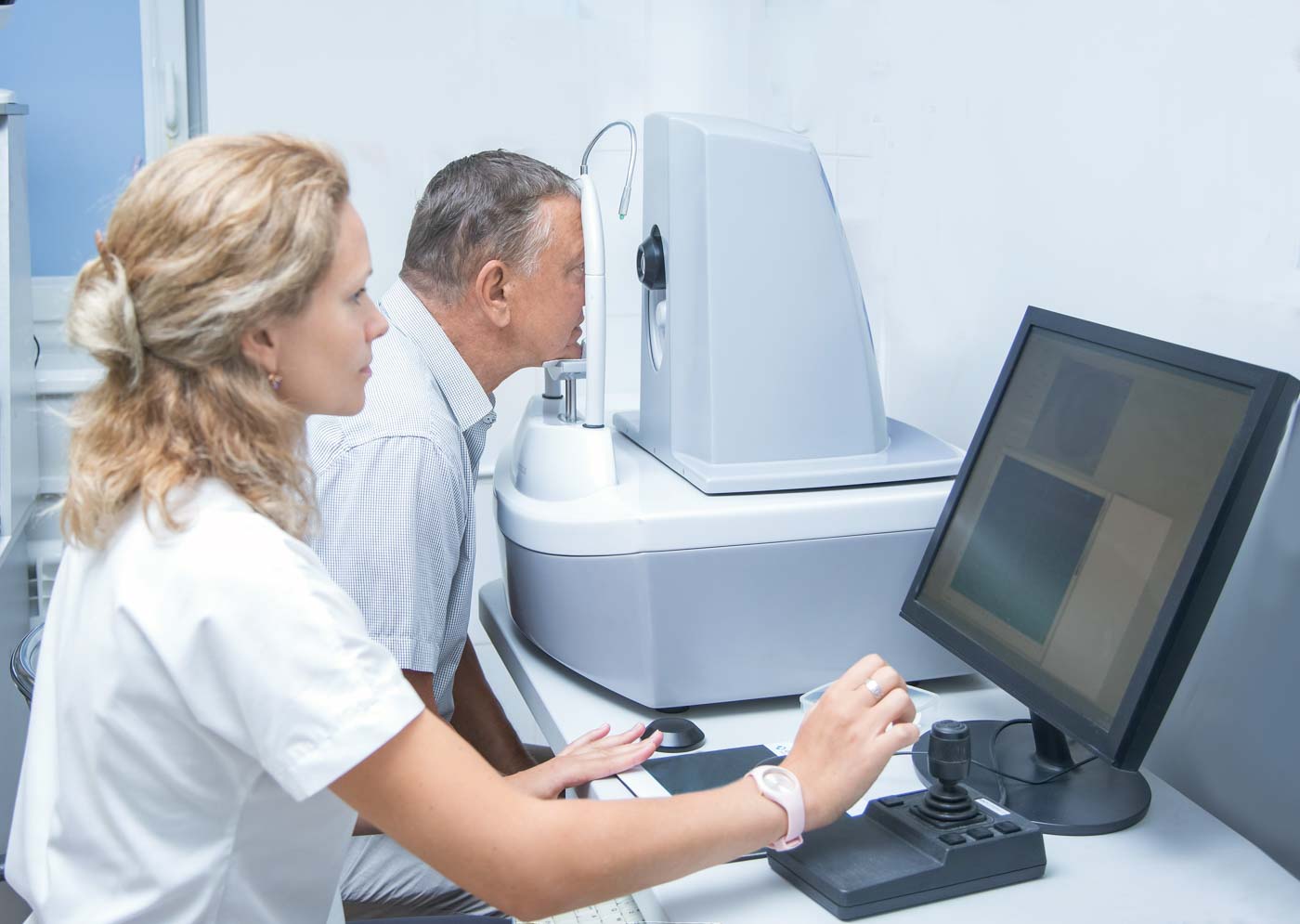
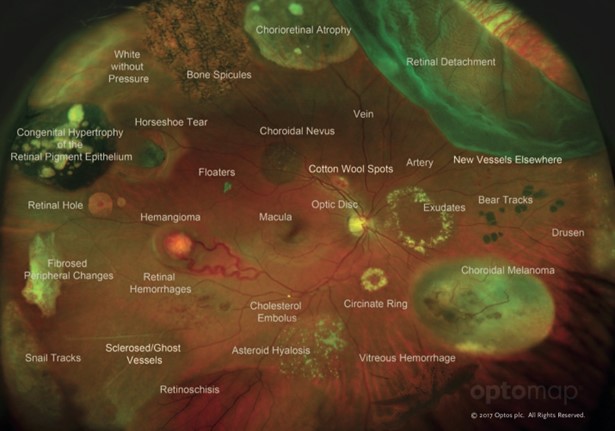
In addition to all the tests in the standard eye exam, the comprehensive eye exam includes the following tests to help determine your overall eye health.
- Slit-lamp exam: To examine the front of your eyes, including your cornea, iris, conjustiva and eyelids, we use a slit-lamp, which is a microscope with a bright light. The image on the top left shows an eye doctor performing a slit-lamp microscope on a young female patient.
- Pupil dilation or Eye Imaging: Using eye drops to dilate your pupils is an older, but still valuable technology, which allows your eye doctor to see the inside your eyes, including the optic nerve and retina. Whenever we can, we use a retinal imaging camera which gives us a digital image of the eye that provides a very detailed image and a much larger angle of the inside of the eye. This digital image can detect other systemic health problems such as diabetes and high blood pressure. This also provides us with baseline data to compare subsequent visits.
The image on the center left shows a female optometrist performing a retinal eye exam on her middle-aged patient. The image on the bottom left shows a sample output of the retinal imaging. The image provides a 270 degree view of the retina and can diagnose a multitude of eye diseases as shown in the image.
- Tonometry: A tonometer tests your eyes for glaucoma by producing a puff of air to measure your eye pressure.
- Ocular health exam: Our Good Eye Optometry eye doctors will check your eyes for other eye diseases, like age-related macular degeneration, cataracts, dry eye disease and keratoconus.
- Refraction: These tests measure visual acuity, like but more thorough than, the standard eye exam and may use other equipment to give you the most accurate eyeglasses or contact lens prescription.
Conclusion
The eye doctors at Good Eye Optometry recommend getting a comprehensive eye exam as the additional time and small additional expense is well worth it to get an early jump on any potential eye problems for both children and adults. For children vision problems can negatively affect both their academic performance and their self-confidence.
In some cases, comprehensive eye exams have turned out to be lifesaving as it may provide a diagnosis of the very early stages of diseases that may have little or no symptoms. Of course, the patient will have a much better prognosis with early detection and intervention.
Contact Good Eye Optometry today to schedule your comprehensive eye exam and sleep better tonight, knowing you are on the road to taking great care of your eyes. For those who have children, an eye exam can give them the gift of great eyesight and help them be successful and self-confident. If you have questions or would prefer to speak to one of our friendly staff to discuss our services or treatments, please call us at (310) 440-9500 or stop by our private practice office
